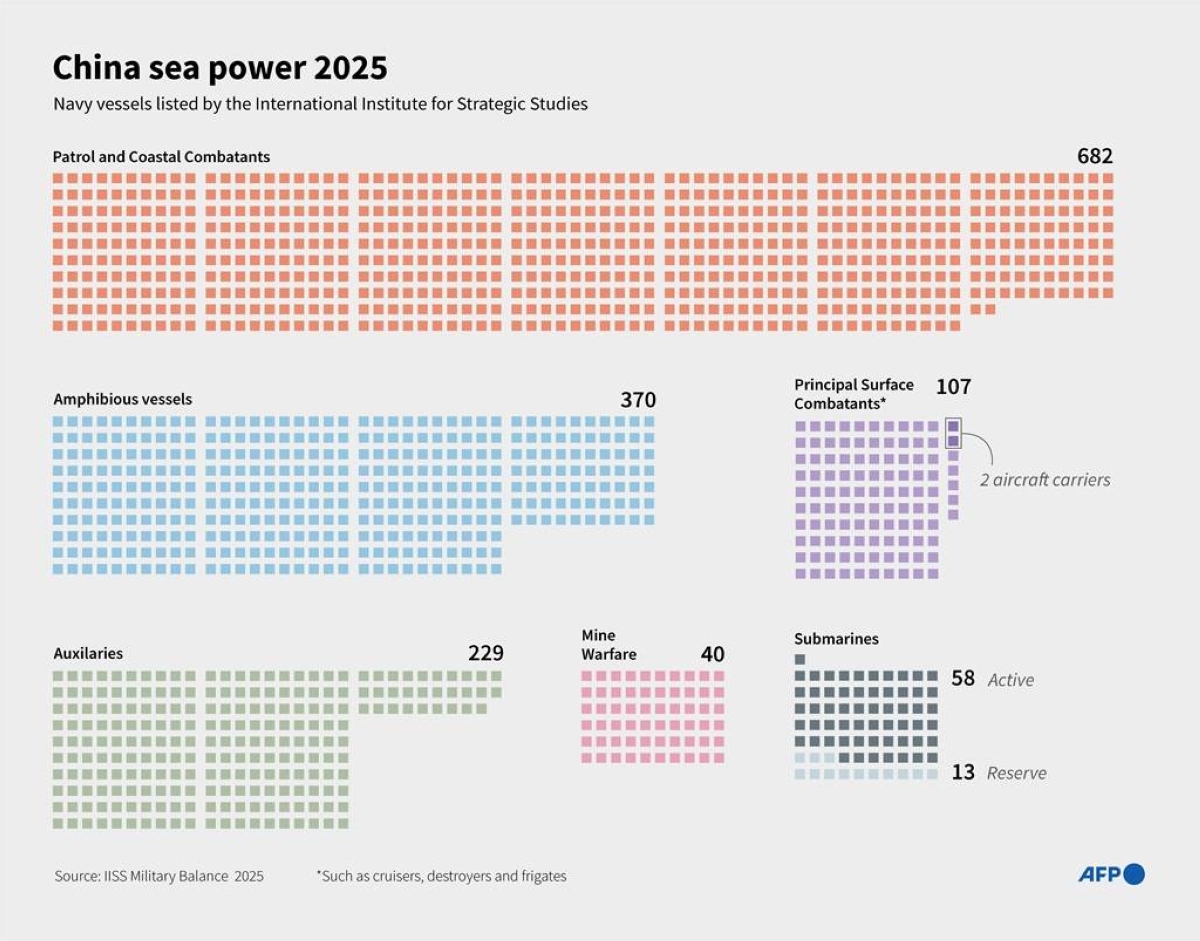
(TO UPDATE) TOKYO — For the first time, two Chinese aircraft carriers have been spotted operating in the Pacific Ocean, according to Japan. The country’s defense minister stated on Tuesday that this activity highlights the growing extent of Beijing's military operations.
China's Shandong and Liaoning carriers — its only two currently in operation, with a third undergoing sea trials — were both spotted with their fleets in recent days, Tokyo said.
The primary objective of the Chinese military, as stated by a defense ministry spokesperson to Agence France-Presse (AFP), is to enhance its capacity for operational effectiveness and conducting missions in far-off regions.
The Defense Minister, General Nakatani, informed journalists that these observations indicate an expansion of China’s military activity zone.
Nakatani stated that Japan conveyed via diplomatic channels to Beijing that China’s actions ought not to jeopardize Japan's security.
He further stated that the Japanese military would keep a close watch and conduct patrols on the activities of Chinese naval vessels.
The deployment of China's navy and air force to strengthen its territorial assertions has alarmed the United States and its partners across the Asia-Pacific area.
During a routine press conference, when questioned regarding these movements, Chinese Foreign Ministry spokesperson Lin Jian restated the comment made the prior day concerning the Liaoning’s journey.
The operations of Chinese naval vessels in the respective maritime zones are entirely consistent with international law and established international norms," he stated, further urging Japan to "adopt an impartial and logical perspective on this matter.
Island chains
On Monday, according to Japan’s Defense Ministry, the Shandong navigated within the economic zones of Japan near the isolated Pacific island of Okinotori.
Accompanied by four additional ships, such as a missile destroyer, along with fighter jets and helicopters performing takeoff and landing operations in the area. These units were also observed navigating through Pacific waters on Saturday.
Earlier, the ministry mentioned that China’s second active aircraft carrier, Liaoning, along with its accompanying vessels, traversed into Japan's Exclusive Economic Zone (EEZ) in the Pacific over the weekend. Afterward, they exited to carry out exercises featuring fighter jets.
Japanese and U.S. defense authorities indicate that China aims to drive the American military out of the "first island chain," extending from Japan southward through the Philippines.
Ultimately, their plan is to control regions lying west of the "second island chain" in the Pacific Ocean, spanning from Japan’s distant Ogasawara Islands to the U.S.-owned territory of Guam, according to them.
The latest eastern voyage of the Liaoning was notable as it was the first instance where Japan’s Defense Ministry acknowledged that a Chinese aircraft carrier had sailed beyond the second island chain.
Daisuke Kawai from the University of Tokyo’s economic security research initiative informed AFP that these actions marked “an extremely significant strategic intensification.”
"The naval activities of China within Japan’s Exclusive Economic Zone are clearly provoking, aimed at strategically gauging Japan’s tolerance levels without explicitly breaking international laws," he stated.
Third carrier
In September, the Liaoning traveled between two Japanese islands close to Taiwan and ventured into Japan’s contiguous waters, which extend up to 24 nautical miles from its coastline.
At that time, Tokyo deemed that action as "unacceptable" and conveyed "grave concerns" to Beijing.
According to international law, a country has the authority to oversee the utilization of natural resources and various economic operations inside its EEZ, extending up to 200 NM (370 km) from its shoreline.
Kawai mentioned that with China expected to launch its third aircraft carrier, Fujian, later this year, "the country’s naval activities and areas of influence at sea are set to expand considerably."
Moreover, the scheduling of these voyages might be connected to the larger scenario of escalating economic disagreements between the United States and China.
"Senior U.S. policymakers, including President Donald Trump himself, have moved their attention from strategically containing China to obtaining economic concessions," Kawai stated.
"Thus, Beijing calculated that the US would be less willing or able to respond militarily at this precise moment, seeing it as an opportune time to demonstrate its expanding military capabilities," he added.
